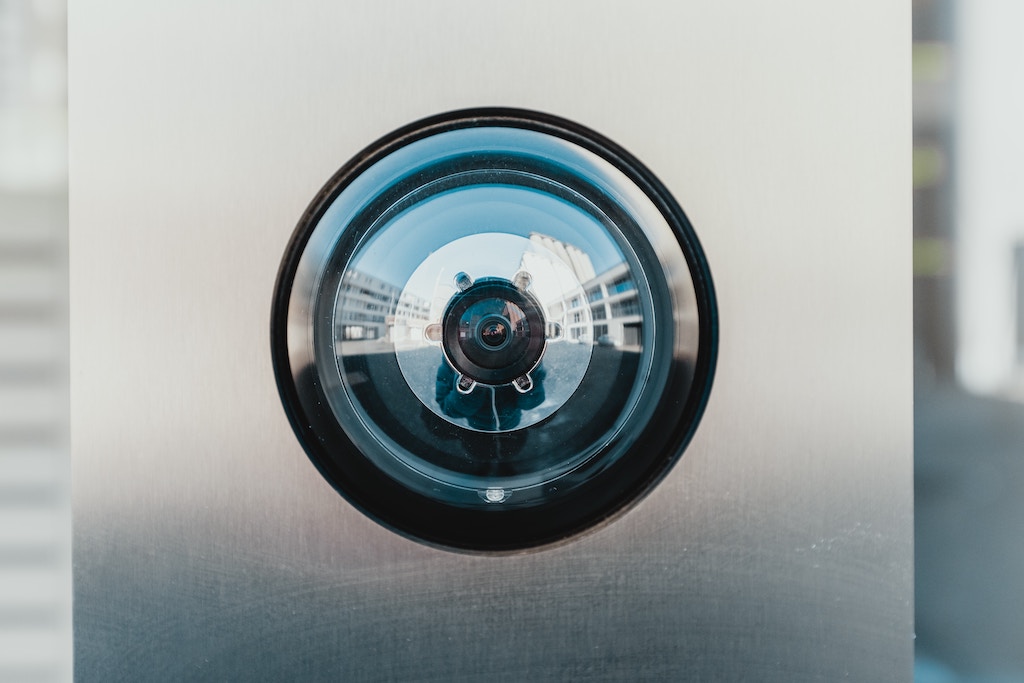The evolution of home security technology offers us an array of tools to help ensure the safety of our loved ones and belongings. Home security sensors stand out among these tools as indispensable components of a comprehensive security system. Here, we’ll explore home security sensors, various types and their functions, and provide insights on maintaining them for ultimate peace of mind.
What is a home security sensor?
Home security sensors are electronic devices designed to detect and respond to specific environmental changes or events that could indicate a breach in security. These sensors work with a central control unit, often connected to a home security system, to trigger appropriate actions or alerts when specific criteria are met. They are integral to a layered security approach, offering real-time information and allowing homeowners to respond promptly to potential threats.
Door sensors: Safeguarding entry points
At the forefront of home security systems lies door sensors, also known as contact sensors. These unassuming devices are pivotal in fortifying your home’s entry points, ensuring that unauthorized access is promptly detected and thwarted.
Components and operation
Door sensors operate on a simple principle. Comprising two key components – a magnet and a sensor – these devices are strategically placed to monitor the opening and closing of doors and windows. One component is affixed to the door or window frame, while the counterpart is positioned on the moving portion of the entry point. When the door or window is securely shut, the magnet and sensor align, creating a closed electrical circuit. This alignment signifies that the entry point is intact and secure.
However, if an unauthorized attempt is made to open the door or window, the magnet and sensor no longer align, breaking the circuit. This breach triggers an immediate alert within the security system. Alarms are activated, and notifications are sent to homeowners or security personnel, ensuring swift action against potential threats.
Types of door sensors
Door sensors come in different varieties, each tailored to specific security needs. The two most common types are open/close sensors and tilt sensors.
- Open/Close Sensors: The open/close sensor is the most fundamental and widely used type of door sensor. As its name suggests, it provides a binary status – whether a door or window is open or closed. This type of sensor is commonly installed on critical entry points such as front doors, back doors, and windows. Open/close sensors offer a basic but highly effective means of intrusion detection by monitoring the state of these access points.
- Tilt Sensors: Tilt sensors are designed to detect changes in the angle of an object. These sensors find their niche in applications such as monitoring garage doors and large windows that open by tilting. If an unauthorized attempt is made to manipulate these entry points, the change in angle triggers the sensor, sending an alert that someone is tampering with the access point. Tilt sensors add an extra layer of security by addressing unconventional openings that intruders might exploit.
Motion sensors: Detecting movement
While door sensors focus on entry points, motion sensors expand the scope of protection by detecting movement within designated areas. These sensors are integral to any robust home security system, ensuring potential threats are detected before they reach entry points.
Motion sensor lights
Motion sensor lights, also known as motion-activated lights or motion detectors, are lighting fixtures equipped with sensors that can detect movement in their surroundings. These lights are designed to automatically turn on when they sense motion and turn off after a certain period of time when no motion is detected. They are commonly used for security, safety, and energy-saving purposes in various settings, including residential, commercial, and outdoor spaces.
Types of motion sensors
Motion sensors utilize various technologies to achieve their detection capabilities. The three primary types are Passive Infrared (PIR) sensors, Microwave sensors, and Dual Technology sensors.
- Passive Infrared (PIR) Sensors: PIR sensors are widely used for indoor motion detection. They work by detecting changes in infrared radiation caused by moving objects. These sensors are particularly effective in detecting human-sized objects. When a person or other warm-bodied creature enters the sensor’s field of view, the change in infrared energy triggers an alert, signaling potential movement.
- Microwave Sensors: Microwave sensors operate by emitting microwave pulses and analyzing the reflections of these pulses off nearby objects. Due to their high sensitivity, they are suitable for larger areas and outdoor spaces. These sensors excel at detecting motion over broader zones and are less prone to false alarms caused by environmental factors.
- Dual Technology Sensors: Dual technology sensors combine the strengths of PIR and microwave technologies to enhance accuracy and reduce false alarms. These sensors require both technologies to be triggered simultaneously before an alert is activated. By demanding confirmation from two independent detection methods, dual technology sensors significantly mitigate the chances of erroneous alerts caused by factors unrelated to security breaches.
Window sensors: Securing vulnerable access points
While doors are a common entry point for intruders, windows also represent a vulnerable area that requires protection. This is where window sensors come into play, offering a specialized solution to secure these openings.
Monitoring window status
Window sensors operate on the same fundamental principles as door sensors – they monitor the status of an entry point and trigger alerts when breaches occur. These sensors ensure that even unconventional access points are protected by focusing on windows.
Types of window sensors
Window sensors encompass two main types: open/close sensors and broken glass sensors.
- Open/close sensors: Like door sensors, open/close sensors designed for windows indicate whether a window is open or closed. These sensors are strategically placed on window frames and sashes, providing a reliable means of monitoring window status. When a window is opened or closed, the sensor registers the change and relays this information to the security system.
- Broken glass sensors: Broken glass sensors, also known as acoustic or vibration sensors, detect the unique sound or impact of breaking glass. When a window is shattered, the sudden vibrations caused by the event trigger the sensor, alerting the security system. This early warning provides valuable time to respond to potential break-ins by alerting the authorities or taking other necessary precautions.
Smoke and heat detectors: Early fire detection
While home security sensors are often associated with preventing break-ins, their scope extends far beyond burglary protection. Fires pose a significant threat to homes and their occupants, and this is where smoke and heat detectors are pivotal.
Early detection of fire
Fires can escalate rapidly, leading to devastating consequences if not detected and addressed promptly. These detectors are designed to identify the telltale signs of a fire’s inception, allowing occupants to take immediate action.
Types of fire detectors
Smoke and heat detectors employ different technologies to detect fire-related threats:
Optical smoke detectors: Optical smoke detectors, also known as photoelectric smoke detectors, operate based on the principle of light scattering. They emit a steady beam of light within a sensing chamber. When smoke particles enter the chamber, they scatter the light, triggering an alarm. These detectors are highly effective at detecting smoldering fires that produce visible smoke but may not generate significant heat.
Heat detectors: Heat detectors are specialized sensors designed to respond to rapid temperature changes caused by fires. Unlike smoke detectors, they don’t rely on detecting smoke particles. Instead, they sense the heat generated by a fire and trigger an alert when the temperature exceeds a certain threshold. Heat detectors are particularly useful in areas prone to false alarms, such as kitchens, where cooking can sometimes trigger smoke detectors.
Combination detectors: Combination detectors merge the capabilities of both smoke and heat detectors. These versatile sensors provide a more comprehensive approach to fire detection, increasing the likelihood of early alerts in various fire scenarios.
Prompt response to fire rhreats
These sensors trigger alarms throughout the premises upon detecting smoke or a rapid temperature change. These alarms serve as an immediate warning, allowing occupants to take swift action.
Carbon monoxide detectors: Preventing silent threats
Home security extends beyond the realm of physical intruders and fires. Silent threats such as carbon monoxide (CO) gas, which is colorless, odorless, and potentially deadly, require vigilance. Carbon monoxide detectors are essential for identifying elevated CO levels, providing an early warning for occupants to mitigate the threat.
Detecting elevated CO levels
Carbon monoxide is produced by incomplete combustion of carbon-containing fuels. It can originate from malfunctioning gas appliances, car engines, or other sources. Elevated levels of carbon monoxide in enclosed spaces can lead to carbon monoxide poisoning, which can result in severe health complications or even death.
Mechanism of carbon monoxide detectors
Carbon monoxide detectors employ electrochemical sensors that can detect and quantify CO levels in the air. These sensors are designed to respond to CO molecules, triggering an alert when the concentration reaches a dangerous level. This immediate warning allows occupants to take action before exposure becomes hazardous.
Ensuring safety through alarm activation
When the concentration of carbon monoxide surpasses a predetermined threshold, the alarm is activated. This alarm serves as an unequivocal indication that a potentially life-threatening situation has arisen. Occupants are then prompted to evacuate the premises, ventilate the area, address the source of CO emissions, and contact relevant authorities as needed.
Maintenance tips for home security sensors
Regular maintenance ensures your home security sensors’ optimal performance. Here are some maintenance tips to consider:
- Regular sensor maintenance: Periodically inspect all sensors to ensure they are clean, free of obstructions, and properly aligned. Dust and debris can compromise their functionality.
- Dealing with false alarms: False alarms can be frustrating and may lead to ignoring legitimate alerts. Adjust sensor sensitivity as needed and consider using pet-immune motion sensors if you have pets at home.
- Replacing batteries and components: Keep track of battery levels and replace them as needed. Outdated or malfunctioning components should be replaced promptly to maintain a reliable security system.
In a world where security concerns are growing, home security sensors offer a tangible solution to protecting what matters most. These sensors provide continuous vigilance, safeguarding entry points to detect fires and silent threats. By understanding the various types of home security sensors and following maintenance best practices, you can ensure that your home remains a haven for you and your loved ones. Invest in these advanced technologies and make your home a fortress of security in an ever-changing world.




